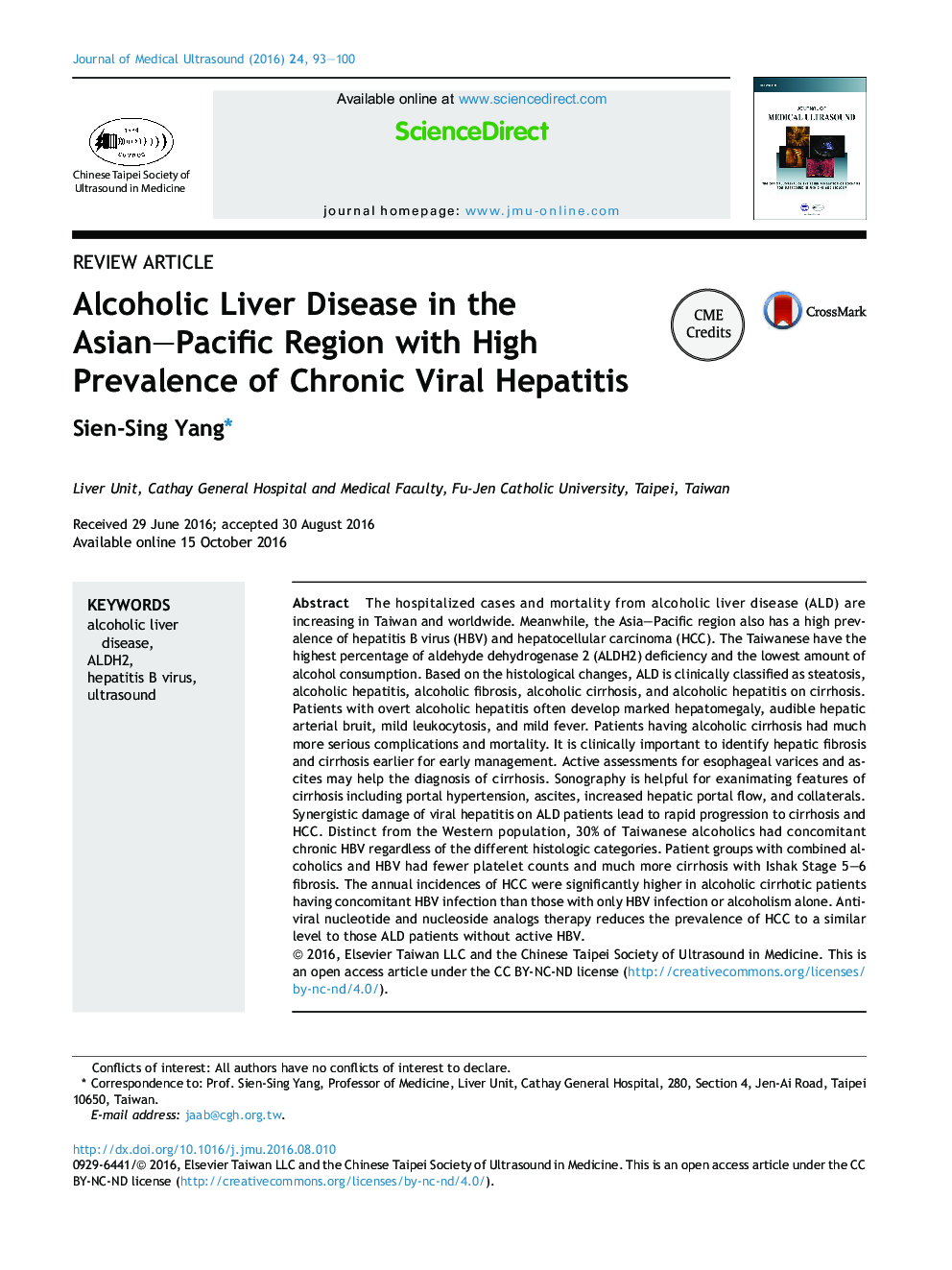| Article ID | Journal | Published Year | Pages | File Type |
|---|---|---|---|---|
| 8823597 | Journal of Medical Ultrasound | 2016 | 8 Pages |
Abstract
The hospitalized cases and mortality from alcoholic liver disease (ALD) are increasing in Taiwan and worldwide. Meanwhile, the Asia-Pacific region also has a high prevalence of hepatitis B virus (HBV) and hepatocellular carcinoma (HCC). The Taiwanese have the highest percentage of aldehyde dehydrogenase 2 (ALDH2) deficiency and the lowest amount of alcohol consumption. Based on the histological changes, ALD is clinically classified as steatosis, alcoholic hepatitis, alcoholic fibrosis, alcoholic cirrhosis, and alcoholic hepatitis on cirrhosis. Patients with overt alcoholic hepatitis often develop marked hepatomegaly, audible hepatic arterial bruit, mild leukocytosis, and mild fever. Patients having alcoholic cirrhosis had much more serious complications and mortality. It is clinically important to identify hepatic fibrosis and cirrhosis earlier for early management. Active assessments for esophageal varices and ascites may help the diagnosis of cirrhosis. Sonography is helpful for exanimating features of cirrhosis including portal hypertension, ascites, increased hepatic portal flow, and collaterals. Synergistic damage of viral hepatitis on ALD patients lead to rapid progression to cirrhosis and HCC. Distinct from the Western population, 30% of Taiwanese alcoholics had concomitant chronic HBV regardless of the different histologic categories. Patient groups with combined alcoholics and HBV had fewer platelet counts and much more cirrhosis with Ishak Stage 5-6 fibrosis. The annual incidences of HCC were significantly higher in alcoholic cirrhotic patients having concomitant HBV infection than those with only HBV infection or alcoholism alone. Antiviral nucleotide and nucleoside analogs therapy reduces the prevalence of HCC to a similar level to those ALD patients without active HBV.
Related Topics
Health Sciences
Medicine and Dentistry
Radiology and Imaging
Authors
Sien-Sing Yang,
